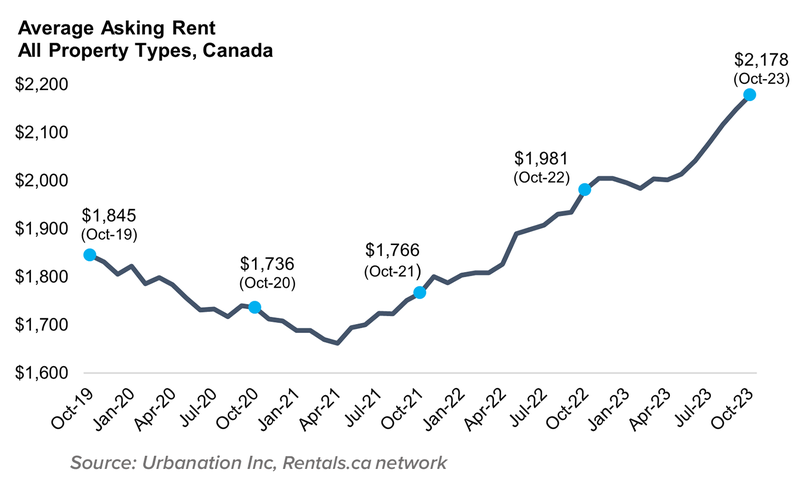A key factor in determining whether an individual is likely to become a homeowner is whether or not their parents were property owners, a new study shows.
The adult children of homeowners were more than twice as likely to own a home compared to the children of non-owners, according to findings released by Statistics Canada last week.
The report found that children of non-homeowners had an overall homeownership rate of 8.1% vs. 17.4% for the offspring of owners. The correlation increased in families that owned multiple properties, rising to a homeownership rate of 22% for those whose parents owned two properties and 27.8% for those whose parents owned three or more.

The study, which focused on those born in the 1990s and compared ownership rates as of 2021, found the positive association between the homeownership rate of adult children and their parents was greatest among adult children with individual incomes of $80,000 or less.
“The income of adult children may be correlated to the income and wealth (including property ownership) of their parents, in part because of patterns of childhood socialization, existing social networks and the amounts invested in education, the report notes.
However, even when accounting for the adult children’s age, income and province of residence, parents’ property ownership is “strongly associated with an increased likelihood of homeownership for their adult children,” it added.
MBRCC unveils principles for mortgage product suitability
Mortgage brokers across the country are being asked to follow a set of six principles to ensure they are making suitable product recommendations to their clients.
In an ongoing effort to strengthen mortgage consumer protections, the Mortgage Broker Regulators’ Council of Canada (MBRCC) last week unveiled its final Mortgage Product Suitability Assessment Principles.
“Given high interest rates, elevated inflation and reduced mortgage affordability, many consumers are looking to the mortgage brokering sector for sound advice,” said MBRCC chair Antoinette Leung. “The Principles developed by MBRCC will support the industry’s provision of suitable recommendations to clients, enhancing the protection of Canadian consumers during a period of challenging financial conditions.”
The draft principles were first released over the summer, and the MBRCC since made two amendments following public feedback.
The mortgage product suitability assessment principles include:
- Know your client
- Know your product
- Assess options and make suitable recommendations
- Clearly communicate and explain rationale of the recommended option
- Ensure adequate oversight and accountability
- Document suitability assessment and oversight
More details on the above principles are available at the MBRCC website.
FSRA releases guidance for mortgage administrators
Effective today, mortgage administrators in Ontario must comply with new rules that govern financial reporting.
The new guidance was released by the Financial Services Regulatory Authority of Ontario (FSRA), which regulates and licences all mortgage brokers, agents, brokerages and administrators in the province.
“Mortgage administrators play the crucial role of handling people’s funds and investments, and we want to ensure that borrower and investor funds are protected,” Huston Loke, Executive Vice President, Market Conduct at FSRA, said in a release. “The guidance we are releasing today aims to reduce the risk of funds and investments being misplaced, stolen, or otherwise treated improperly.”
The guidance will help ensure:
- administrators file the required statements and auditor’s reports on time
- the auditor’s report is certified by a licensed public accountant
- the auditor’s Reasonable Assurance report on compliance with legislation is in a form approved by the CEO and addresses all the required areas of compliance
The full text of FSRA’s new guidance is available here.
Pineapple Financial completes IPO on New York Stock Exchange
Pineapple Financial made history recently by becoming the first Canadian mortgage brokers to launch an Initial Public Offer (IPO) on the New York Stock Exchange (NYSE).
Founded in 2016, Pineapple is a tech-focused brokerage with a network of over 650 partner brokers and agents across the country. It said it will use the capital raised from the IPO to fund research and development and expansion into new product offerings and tech infrastructure.
That includes expanding to every province in the country, adding insurance as a new product offering, and developing digital innovation to “increase productivity and efficiency” across all of its channels.
“The decision to go public was driven by our vision to expand market reach, accelerate growth initiatives, and capitalize on new opportunities,” Pineapple CEO and co-founder Shubha Dasgupta said in a release. “With this successful IPO, Pineapple achieved a milestone that reflects its market potential, growth trajectory, and our commitment to excellence.”
This article was written for Canadian Mortgage Trends by:


